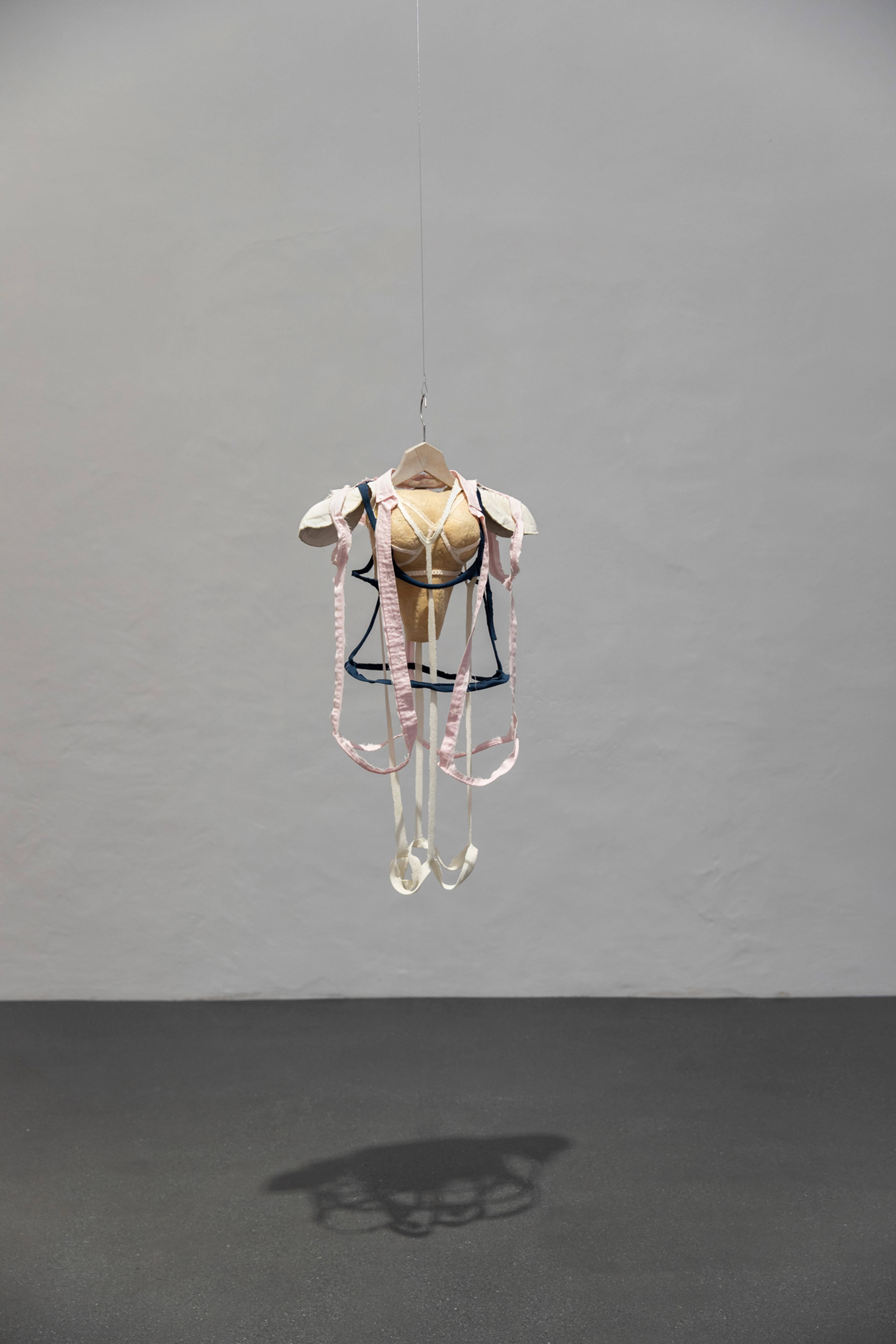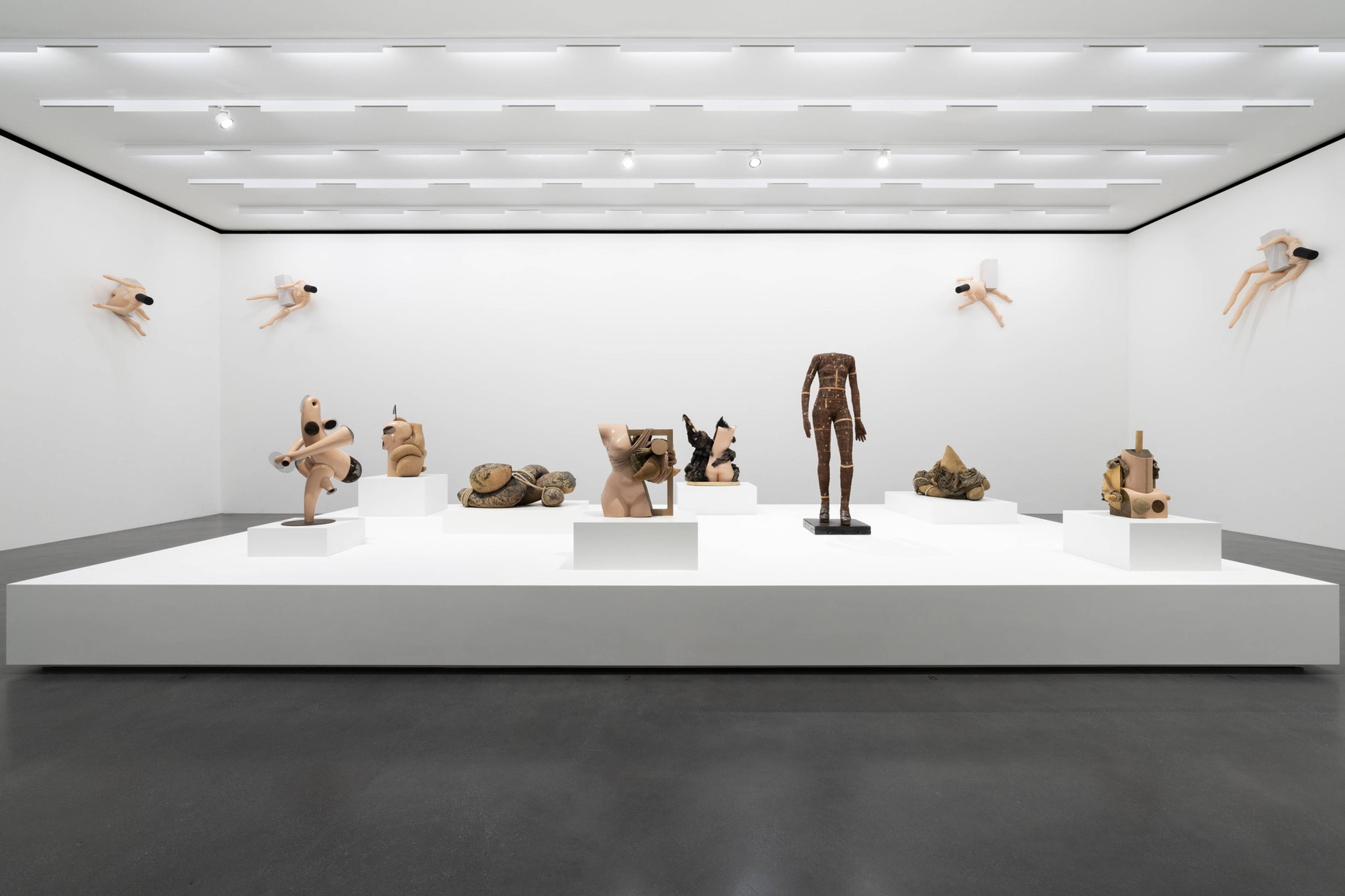In 2019, the Polish entrepreneur Grażyna Kulczyk founded Muzeum Susch in a remote but well-developed mountain village in the Swiss Engadin, to house her own art collection and develop an ambitious program dedicated to little-known pioneers of recent art history – not an easy task per se, and even less so in an off-the-beaten-track stopover between Zurich and St. Moritz. The building itself is quite spectacular: A converted brewery and former monastery, some of the rooms have been carved directly into the rock, with water dripping from the granite walls in gentle, gleaming waves. Its biannual, six-month exhibitions have so far focused on female artists whose non-conformist work was exposed to difficult reception or who were ignored outright during their own lifetimes: Emma Kunz, Evelyne Axell, and Heidi Bucher, but also Laura Grisi, who made a major appearance at the Venice Biennale in 2022. Now, under the curation of Cecilia Alemani, who brought Grisi to the main exhibition in the Giardini, Muzeum Susch has organized the first major retrospective of the work of Anu Põder (1947–2013) outside Estonia.
Views of “Space for My Body,” Museum Susch, 2024. © Muzeum Susch / Art Stations Foundation. Photo: Federico Sette
In short, Põder is an inspiring artist who created an oeuvre of great suggestive power and charisma under difficult conditions. In hindsight, the fact that she was already using textiles in the 1970s, along with “non-artistic” materials such as epoxy, plastic, or jute, and doing so in connection with female subjectivity, makes her an eminent representative of sculpture and installation art under the conditions of the material turn. The show is organized loosely chronological, moving upwards from the basement. Sculptures on a pedestal immediately foreground a wealth of materials: Based on mannequins – shiny, beige objects of desire – Põder developed idiosyncratic body assemblages, cutting up, deforming, or appending freestanding torsos with ropes and fabrics, her interventions visually drastic and unmistakably brutal. With titles such as Before Performance (1981) and Very Old Memories (1985), they carry something of an erotic charge, but also aggression and violence. The former work is a highlight: a figure realized in brown sackcloth and in the proportions of a mannequin, covered all over with patterns that evoke a foreign system equally useful and formalistic. Sewing patterns were long in short supply in Estonia, as in the entire Communist East, and therefore highly sought-after. But they also refer to standardized beauty systems – and thus, to patriarchal power. The feet of Before Performance stand in brown pumps with silver shoelace eyelets, while the other end of the body features an empty space instead of a head.
Anu Põder, Metal Lining (Metallist vooder), 2011, aluminium, textile, leather jacket: 85 x 64 x 34 cm; shoes: 32 x 12 x 12 cm each
Põder, who was born in a small town, reflected her rural origins in another magnificent group of works, wherein worn and processed clothes function as carriers of feminine and masculine identities. In the eponymous hanging sculpture Space for My Body (1995), pieces of women’s clothing cut out at the seams dangle from a hanger like gutted bones. Despite the sparseness of the remaining material, the patina of the historic textiles is clear. She used dresses, jackets, and other garments, but also soap, grease, and other materials associated with her childhood home: Men’s coats have been gashed open and the fur allowed to bulge out; handbags from the 1960s are roughly cut up and pinned together to form sculptures; a simple pair of red wool gloves hangs from the ceiling. A “forensic quality” emerges, as the room text suggests, “as if the objects had been subjected to a strange autopsy.”
Anu Põder, Red Gloves (Punased kindad), 1995, wool, 24 x 34 x 6 cm
And yes, these works develop a strong presence that lies between nostalgia, lost memory, and structural violence, as if the artist was glancing at the past, semi-conscious. The fascinating arch of Põder’s work is her imaginative power to create such strong symbols and meanings through an experimental treatment of her materials. The urgency of their deployment gives them a specific meaning beyond the female and vulnerable – much more so than her contemporaries in other (Western) European countries, where crafted artworks related to the feminine were still drawing, to some extent, on highly traditional values in art, such as image-making in tapestry. In her use of very earthly materials like timber, Põder instead addressed female subjectivity as part of a collective understanding of the world, perhaps as a proto-gesture of transhumanism. There is one telling installation towards the end of the exhibition where the knotholes of two wooden benches (Knotholes, 2003) were filled with plaster in the form of the human vertebra, as if somebody had sat down and simply disappeared. It is a work as fresh as any one could find today in a contemporary gallery space.
View of “Space for My Body,” Museum Susch, 2024. © Muzeum Susch / Art Stations Foundation. Photo: Federico Sette
___
“Space for My Body”
Muzeum Susch
5 Jan – 30 Jun 2024







